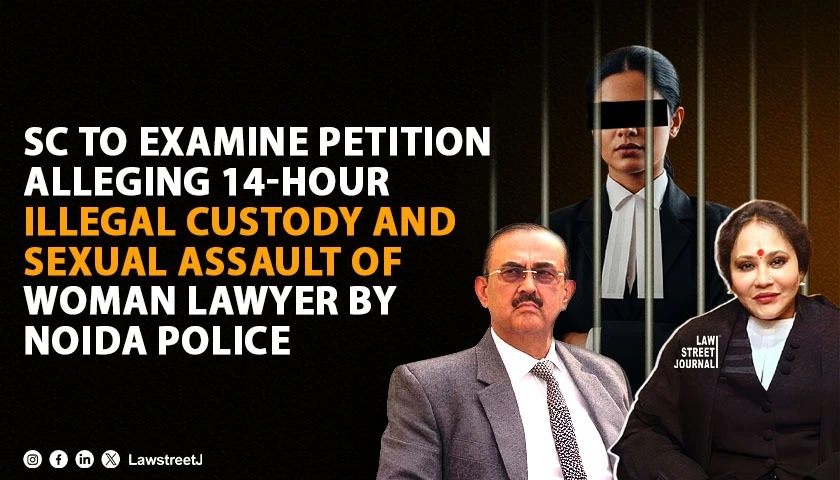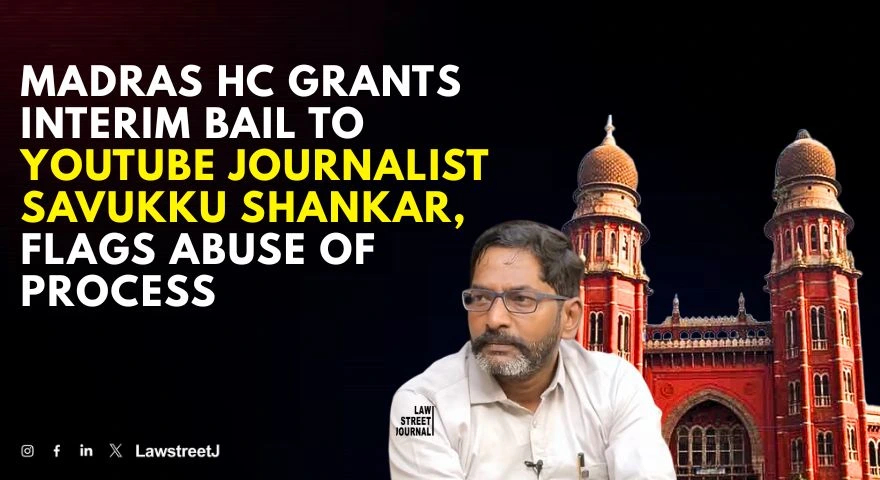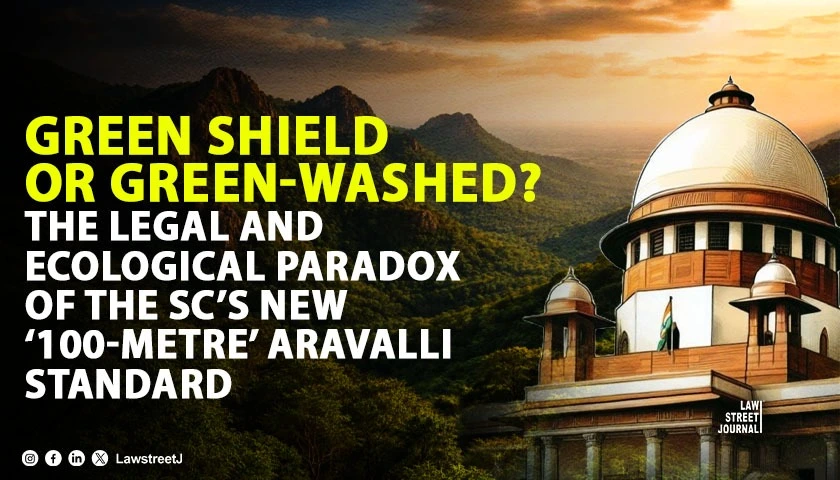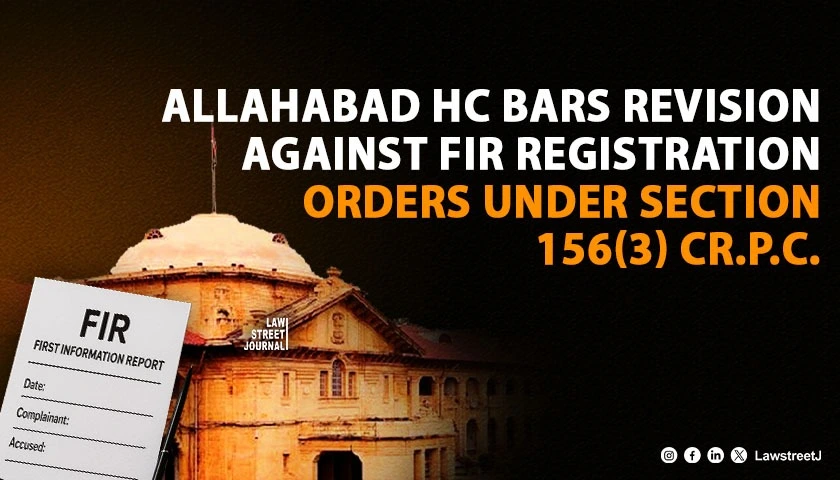New Delhi: The constitution is an organic document. The ways of interpreting the constitution are numerous, namely—strict, liberal, harmonious, purposive, and creative interpretations—but cultural interpretation hasn’t yet been deliberated upon. Even without it being a widely recognized form of interpretation, it has influenced judicial precedents and constitutional commentaries.
Let us briefly understand what culture means. It isn’t merely the historical practices of a country; it might as well be from the contemporary period. It is the set of ideas, norms, and material unique to a country. When we talk of culture in the context of the constitution, it concerns both national and regional culture. It includes scriptures, texts, monuments, practices, etc.
What is a constitution? The ‘Grundnorm’ of a country, perhaps? It is the basic document of a country upon which all legal, economic, political, and other systems operate. A constitution isn’t made for the entire world; it is for a specific area. Therefore, constitutions are not made to equate all countries but to let them be unique while developing along their trajectories. Even development isn’t the same for all countries. The countries of Europe may have a different idea of developing, while India may follow a different route to development. In essence, due to this contextualized nature of constitutions, cultural interpretation acquires pertinence. Hegde and Mukherjea, JJ., in the Kesavananda Bharati judgment, went to the extent of saying that the constitution is a social, not a political, document. This would entail that the constitution’s aim is the perpetuation of society. Furthermore, the constitution acquires a ‘superorganic’ nature. To understand what is superorganic, we go back to A.L. Kroeber and Herbert Spencer. In simple terms, ‘superorganic’ means something apart from organic and inorganic. The cultural threads attached to something make it superorganic. For example, a tree might seem a biological accident to a biologist, while it may be a god for a particular tribe. Our constitution is inorganic in its physical form, organic in its growth, and superorganic in its essence.
Granville Austin’s conception can shed light on how cultural factors shaped the constitution. Unity, social revolution, and democracy stand as the basic underlying principles of the constitution according to him. Unity was a ubiquitous feeling at and before the time of the formation of the constitution. That feeling was reflected in the limited federalism, the emergency provisions, Article 33, and other such provisions. Through these provisions, the central government has been given the power to bind this country together. At the same time, Article 371 and its sub-articles have given special status to certain states in an effort to essentially contain ethnic and regional conflicts. The origin of all of these is the context of cultural conflict. Social revolution relies heavily on the wrongs committed against certain classes of people. Would Article 17 have been introduced had there been no untouchability? Or would democracy have been so important if centuries of despotism had not pervaded this country? Democracy would not have been so stressed upon had it not been for British rule. The aim of not merely being independent but ruling ourselves is reflected heavily in the constitution.
How to culturally interpret the constitution? The approach to reading the constitution must not only be about universal values or rights but must also include the societal values of the country. Every provision must be read at first without any a priori knowledge of the culture of the country. This will give us the skeletal essence of each article. While interpreting any article, more than one interpretation crops up. That interpretation which is in consonance with the culture of the country must be accepted. But what if the culture and fundamental rights conflict? Then, the prudent course of action will be harmonization of them both, and failing to do so, the fundamental right must be upheld. This leads to malpractices being discontinued.
Cultural interpretation differs from other kinds of interpretation. In a way, it takes into itself all kinds of interpretation but keeps itself different. Purposive interpretation reflects the approach of cultural interpretation. Just like purposive interpretation, cultural interpretation considers the purpose for which the constitution was enacted, i.e., the values, aims, and objectives. But it also sees what the culture of our country is at the moment. It acknowledges the relatively unchanging values of our culture and tries to entwine them with constitutional principles. After all, a country’s uniqueness emanates from its culture. Usually, historical interpretation is confused with cultural interpretation. Though cultural interpretation covers historical interpretation too, it retains a different character. It is broader in its ambit because it also takes into consideration what is happening in contemporary society. It may also cover liberal interpretation because Indian cultural thought is liberal in nature. Even creative interpretation may be culturally affected. There is no thought in the human mind which is completely unbiased. In G.H. Mead’s philosophy, the process of becoming yourself is social. Can there be creativity that isn’t prompted by socio-cultural factors?
Cultural interpretation of the constitution does not bar the government from facilitating actions or events which lead to cultural propagation, even if it may not have any material benefit for the country or its economy. The constitution, being influenced by cultural factors which played a seminal role in its formation, cannot authorize actions which lead to the undermining of its culture. There are reflections of cultural thought within the constitution itself, such as in Articles 25(2)(b), 40, 48, 49, etc.
The Supreme Court has repeatedly said that the Constitution is an organic document (see Golak Nath v. State of Punjab and other cases). What it means is that the Constitution is a living document interpreted according to the changing times for the welfare of the people. But all countries are different. The truth is that there are localized problems and culturally appropriate solutions. Whenever the constitution evolves, it reflects the present-day circumstances. It is the will of the people, i.e., the ‘Volksgeist’. But it also takes into consideration what has happened in the past. After all, a transition from the past to the future cannot be revolutionary without involving a far greater risk of chaos. So, whilst interpreting the constitution, both the past and present are inadvertently reflected, giving birth to what can be termed as ‘Cultural Interpretation’. Even without being cognizant of this, this interpretation pervades judicial precedents. The cultural patterns of thinking are reflected in constitutional interpretations. The advocates of liberal interpretation of the constitution say that the constitution is not to be interpreted too literally, i.e., it cannot be expounded with the help of a dictionary. From here, it doesn’t seem far-fetched, the idea of cultural thought being used in the interpretation of the constitution. The constitution is not an ordinary statute. Therefore, it has to be interpreted not according to the standard rules of interpretation of statutes. Cultural interpretation thus becomes an important way of expounding the constitution.
Public welfare and morality are quite closely associated with cultural interpretation. By and large, Indian culture focuses on public duties, demands, morality, etc., which is reflected in the thinking of the judges, as legal realists would argue. There is the pertinent case of Mr ‘X’ v. Hospital ‘Z’, (1998) 8 SCC 296, in which the fact that Mr ‘X’ had HIV was disclosed by the hospital to the appellant's future wife-to-be, leading to the cancellation of their marriage and even social ostracization of the appellant. It was held that “where there is a clash of two Fundamental Rights, as in the instant case, namely, the appellant's right to privacy as part of right to life and Ms ‘Y’s right to lead a healthy life which is her Fundamental Right under Article 21, the right which would advance the public morality or public interest would alone be enforced through the process of court, for the reason that moral considerations cannot be kept at bay and the judges are not expected to sit as mute structures of clay in the hall known as the courtroom but have to be sensitive, in the sense that they must keep their fingers firmly upon the pulse of the accepted morality of the day. Here, it’s easily discernible that public morality or the accepted morality is the court’s primary interest—not to say that there can’t be other perspectives. This kind of interpretation is a reflection of how our culture has affected the thinking of even the judges of the Apex Court. Probably, the American Supreme Court would not give this particular ruling in the same scenario, given their obdurate focus on individual rights and freedom.
In essence, cultural interpretation of the Indian Constitution is a complicated process requiring cognizance of cultural values, traditions, and aims. This interpretation becomes the most important practical interpretation of the constitution. The rest of the interpretations like strict, liberal, etc., can be seen as ideal types. None of them are followed in their entirety. The judges have to strike a balance between all kinds of interpretation. But cultural interpretation encompasses all of these ‘ideal types’ against a contextualized backdrop. Therefore, it becomes fundamentally important for the judiciary and jurists alike to be cognizant of this interpretation and peruse it.
Disclaimer: The opinions expressed in this article are solely those of the author and do not necessarily reflect the views of LawStreet Journal.

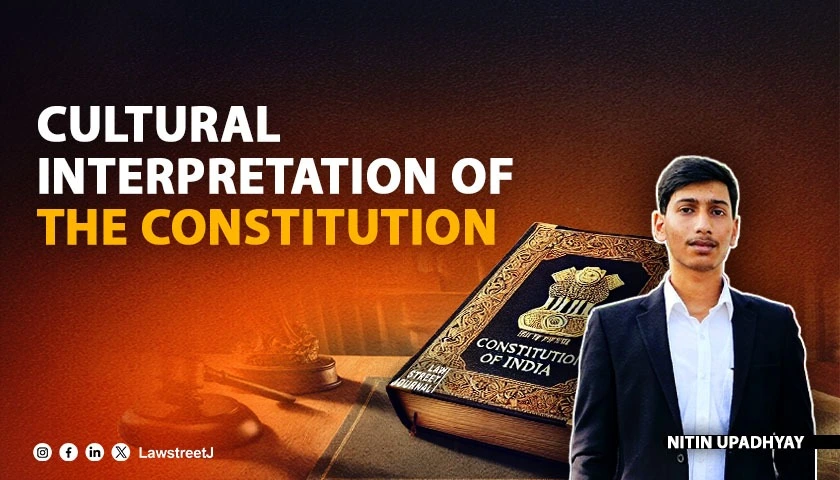

![Women cant be denied job for not being married: Rajasthan High Court [Read Judgment]](/secure/uploads/2023/09/lj_8336_fbfe7a8f-f672-4a69-86ba-ba50c8f28544.jpg)
![Supreme Court Declares Retroactive Prosecution of Central Govt Officers in Corruption Cases [Read Judgment]](/secure/uploads/2023/09/lj_7861_761f7288-0461-48fc-8fc5-0a54fdeb9c73.jpg)

